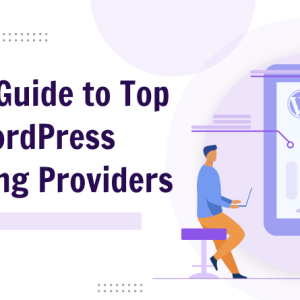In today’s competitive real estate industry, managing property, lessee, and lease information effectively makes all the difference between good business and better customer satisfaction. With Salesforce and Yardi being the twin towers of the two leading platforms of the department, coming together to form one fine ecosystem, real estate businesses can maintain their clients, tenants, properties, and leases even more effectively. It will take you through the integration of Salesforce with Yardi, how it covers the full lifecycle of lease management, and some very important steps toward seamless integration.
Table of Contents
1. Benefits of Yardi-Salesforce Integration
The integration of Yardi and Salesforce brings the most potent property management capabilities of Yardi with the power of the CRM features of Salesforce. The key benefits include:

Centrally positioned data access integrates Salesforce and Yardi for seamless, uninterrupted insight into customer and property information for unified access by all the real estate teams. Gracia says this synchronous position of data sourced from diverse functions smoothers communications and catalyzes quicker decisions and further improves collaboration across dispersed departments.
- Improved Relationships with Clients: Customer relationship management in Salesforce allows for the tracking of interactions and customization of outreach to improve relationships with clients. All integrations with Yardi will be updated in real time regarding the status of properties so that teams can quickly provide accurate information to clients.
- Better Lease Management: While Salesforce will automate most of the functions involved with regard to managing clients, Yardi has been specifically designed for real estate-specific lease management tracking. Put together, they work wonders in easing the leasing cycle right from inquiry to renewal.
- Operational Efficiency: Integration among the platforms reduces cumbersome operations, such as manual data entry, thereby reducing the possibility of a human mistake factor. Rather, integration makes things effective by automating things routineness such as updating states of lease terms and changing states of payments.
2. Full Lifecycle Lease Management
Key benefits of Yardi-Salesforce integration: comprehensive support of one or another stage of the lease management lifecycle which can start with a specific inquiry from the tenant and end with the renewal of the lease contract.
- Lead Tracking and Conversion: Salesforce takes in leads and then the teams can filter it and cultivate them. With the integration, when a lead has been previously identified as a prospect, their detail is just copied into Yardi initiating the evaluation search for a property or a booking.
- Application and Approval: Salesforce simplifies the clients’ applications at the company, and after integration with Yardi, it could help the approved apps to generate rentals. Carrying out such a transition would mean the guarantee of another level of maximum consistency for all the tenants and lease information.
- Lease Renewal and Retention: Due to such features, the Salesforce may develop workflows such as alerting those property managers when the lease terms are expiring or even alerting the actual tenants. It provides a means by which the parties involved can discuss renewal at the right time before a space is left vacant and helps to sustain long lasting relationships.
- Tracking of Payments: Both payment and accounting capabilities in Yardi utilize the amount of rent that a particular user is paid while Salesforce consolidates the interaction with a client who is related to a specific receipt. As a result of this consolidation, account balances, interest charges, and all other past due amounts will be easy to monitor for the finance and management workforce.
3. Integration Process
When referring to Salesforce and Yardi as two systems, the integration of the two entails the establishment of a link for passing information between these systems. Here is what a high-level view of an integration process looks like:

- Define Integration Objectives: It is also important to know and explain to everyone what your team must deliver through integration. Whatever the case, let us see if you need to optimize lease management, reporting, or even tenant communiqué automation? This will help you to set the integration in the right way that you want it to be done. The software to integrate Yardi with Salesforce using APIs may be MuleSoft, Jitterbit or Dell Boomi. These platforms have out-of-the-box connectors available for both systems, that allow data to move between the two, without writing any additional code.
- Data Mapping Test: Emphasize the mappings made between specified data fields of Salesforce and of Yardi as well as their fields. Field mapping of the special fields including the tenant details, lease details, the property details ensures that the information held in the two systems is synchronized. Last, but not least, accuracy of the data model leads to more efficient migration of data where errors are minimized.
- Data Synchronization Setup: Determine which frequency of data synchronization is required for synchronization, such as real time, hourly or daily, based upon your organizational needs. Set up data synchronization and ensure everyone knows how real time synchronization will be efficient let’s say for data types such as; tenant inquiries, other less frequent data can work with updated data for 24 hours.
4. Setup Process
Like the case with the technical mapping, creating interfaces for integration of Yardi and Salesforce requires some coordination primarily to make sure that the technical solutions will align well with the intended use. Here is how:
- API Configuration: Yardi APIs and Salesforce APIs were established. These APIs would fix both the two platforms so that stuff can be passed back and forth. Ensure that the integration platform you work with has the ability to safely pull data through these APIs, as well as transfer it unsafely.
- Security and Compliance: Real estate data contains several highly sensitive records, which is why real estate requires corresponding levels of security and compliance. Make sure that your integration process complies with appropriate industry regulative standards, including GDPR or CA CCPA; or even increase the amount of the encryption.
- Testing and Quality Assurance: One must test it well before deploying it to a production organization to avoid making the organization collapse. Make sure that in terms of data the consistency, accuracy and frequency of data input correspond to your expectations to make sure that the integration will really bring you the expected benefits. Discover any gaps in the data or test efforts with reduced builds and/or different workflows that give assurance of the integration’s performance.
- User Training: Educate the personnel that are expected to work with the system once integrated how to do so. It means property managers and real estate agents need to understand how data in two platforms are connected to each other or how the new set up can be used for regular activities.
5. Summing Up
Integrating Salesforce into Yardi provides real estate businesses with a strong toolset for improving relationships with clients, lease lifecycle management, and operational efficiency. Putting together Yardi’s features on property with Salesforce’s CRM functions yields a single platform where access to data is unified, lease management is streamlined, and communication with clients is timely. If you carefully plan, choose the right integration tool, and test rigorously, your real estate team gets to unlock a fully functioning potential of both parts toward seamless workflow that supports business growth and customer satisfaction.
FAQs
The integration of Gross Yardi and salesforce running an integrated system of Yardi for building property alliance with Salesforce’s CRM tool improves the lifecycle of the lease, customer relations, and the efficiency of the operation.
There are many third-party integration tools like MuleSoft, Jitterbit, and Dell Boomi which provide many ready connectors to integrate a system with Salesforce or Yardi with minimum coding effort.
Field mapping matches fields between Salesforce and Yardi through matching the important information such as tenants, leases, and properties. The need for data migration results increases time and accurate mapping decreases the number of errors during the mapping process.
Based on the requirements of the business organization, we can decide the frequency of synchronization whether it is real-time, hourly or daily. For frequently changing data such as tenant enquiries, real-time synchronization should be used while for data that changes more slowly, daily synchronization should suffice.
Web services are used to establish connections between Salesforce and Yardi and do so in a way that is safe and effective, this includes fields of lease and tenant data as well as payment data.





